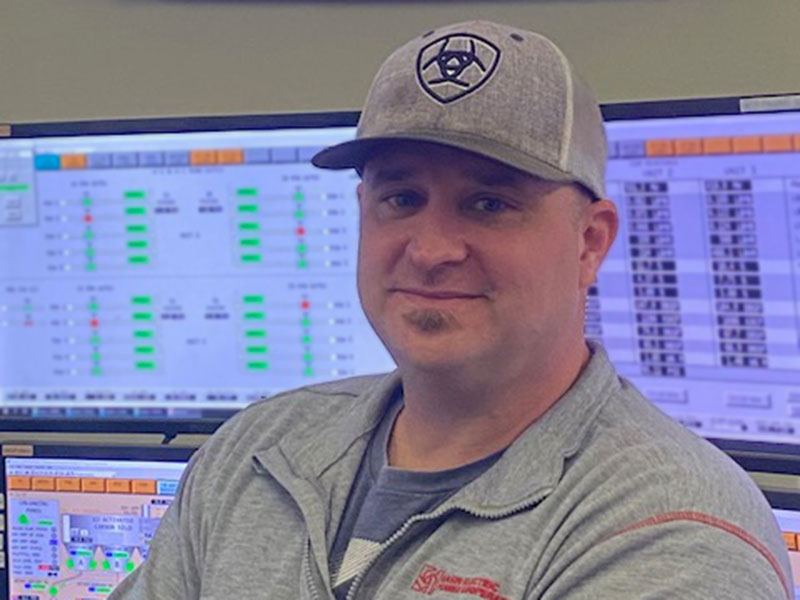- Products
- About
- Responsibility
- Environment
- News
- Contact us
- Careers
-

Most of us take clean air for granted as we go about our day, never thinking about what’s in the air we are breathing, while behind the scenes generation facilities like Laramie River Station, located in Wheatland, Wyoming, are working hard to ensure the air we’re breathing is safe and clean.
Laramie River Station is made up of three coal-based generation units that have the capability of producing up to 1,700 megawatts of dispatchable electricity. It is the second largest coal-based power plant in Wyoming, and with nearly 250 employees it plays a vital role in providing Basin Electric and its members with clean, reliable, and affordable electricity.
Generating that much electricity requires all hands on deck and one critical aspect of running a coal plant is operating its environmental controls. In 2016, Laramie River reached an agreement with the Environmental Protection Agency (EPA) to reduce nitrous oxides (NOx) and sulfur dioxide (SO2) emissions from the plant.
While every job at Laramie River is critical to the function of the plant, it’s the scrubber operator whose role it is to monitor equipment and to take immediate action should problems occur such as load changes, equipment failure, or if any type of abnormal operation happens. Between environmental controls and the work of the scrubber operator, dispatchable generation at plants like Laramie River Station are able to remain online to ensure reliability for Basin Electric’s members.
James Wagner, a scrubber operator at Laramie River Station, is one of six operators who monitor environmental controls using wet scrubbers for Units 1 and 2 and a dry scrubber for Unit 3. Wet scrubbers work by wetting the gas, enabling the SO2 in the gas to react with limestone and be converted to calcium sulfate, while a dry scrubber uses slightly different calcium chemistry to neutralize the SO2 from the gas.
As part of environmental control efforts, the fly ash accumulated from Units 1 and 2 is sold for use in concrete, cement manufacturing, soil stabilization, and waste treatment. The waste slurry is made up of calcium sulfate and unreacted limestone and stored in the landfill or a lined storage pond.
The waste from Unit 3 is mixed with the waste slurry from Units 1 and 2 and is sent to the landfill. Laramie River also has lined ponds where waste slurry is held and reused in their systems. The pond liners were recently upgraded to conform with the Coal Combustion Residues Rule from the EPA.
“We all do our part at Laramie River Station to contribute value to the cooperative,” Wagner says. “The team of scrubber operators work together to maintain a safe work environment and to keep equipment running efficiently so we can continue to provide reliable power to our members.”
To learn more about environmental controls at Laramie River Station, read How We Serve: Environmental Controls in the Spring/Summer 2023 issue of Basin Today.
Dakota Gasification Company
Headquarters:
1717 East Interstate Avenue | Bismarck, ND 58503-0564 USA
701.223.0441 | 1.800.242.2372
Great Plains Synfuels Plant
420 County Road 26
Beulah, ND 58523-9400 USA
701-873-2100
A subsidiary of:
Basin Electric wants all interested and qualified candidates to apply for employment opportunities. If you are an applicant with a disability who is unable to use our online tools to search and apply for jobs, or who needs other assistance or accommodations, please contact us at 701-223-0441. Please indicate the specifics of the assistance needed or provide your contact information, and a Basin Electric Human Resources representative will contact you. Basin Electric is an Equal Employment Opportunity Employer regarding race, color, religion, sex, sexual orientation, gender identity, national origin, disability, and veterans status.